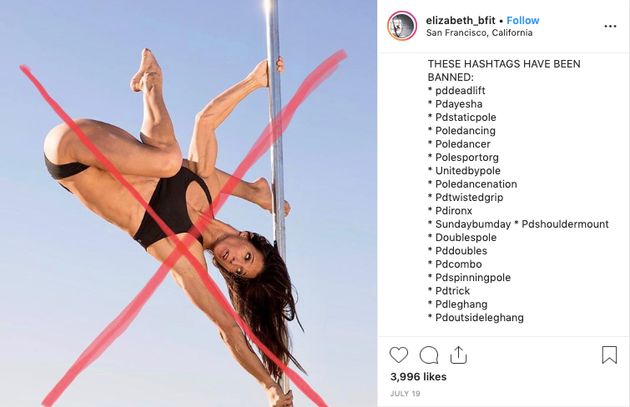
In a recent Q&A on Instagram, Adam Mosseri, the platform’s chief executive officer, received a question from someone about shadow banning.
“It’s not a thing, right?” the person asked.
“Shadow banning is not a thing,” Mosseri replied. “If someone follows you on Instagram, your photos and videos can show up in their feed if they keep using their feed. Being in [Instagram’s Explore page] is not guaranteed for anyone. Sometimes you’ll get lucky, sometimes you won’t.”
Shadow banning is generally understood to be the secret censorship of a person, topic or community on social media. Being shadow banned can mean your public posts on a given platform are only visible to you and your followers, restricting your ability to reach new people and grow your account. This can be devastating for small business owners who rely on social media exposure to attract customers beyond their existing networks.
Mosseri’s openness is to some extent laudable — you won’t find many Silicon Valley executives taking questions from the public about the inner workings of their multi-billion dollar companies as frequently as he does — but his answer was misleading.
Instagram’s policies make clear that being featured on the app’s explore page — an algorithmically curated collection of users’ public posts — is not just a matter of being “lucky.” The Facebook-owned company has even had to apologise recently for wrongly shadow banning certain communities, though it didn’t use that term.
Last summer, Instagram was caught shadow banning posts from pole dancers and attendees of a Caribbean carnival. It quietly restricted all posts containing associated hashtags, such as #PoleFitness and #StLuciaCarnival, which it later said was done in error. “We apologise for the mistake,” a spokesperson said in each case, following public backlash. “It is never our intention to silence members of our community.”
Instagram acknowledges, however, that it hides public posts it deems to be “inappropriate” — but that don’t actually violate any guidelines — from its explore and hashtag pages. It does this without alerting affected users, who are often left to wonder why their content’s engagement is lower than usual.
The objective here, Instagram says, is to prevent the promotion of potentially unsafe posts. But the company has yet to explain how it defines “inappropriate,” or to give users even a vague idea, instead threatening to secretly curtail their visibility should they fail to follow an undefined rule.
In other words, selective shadow banning is written into Instagram’s rulebook.

“Shadowbanning means a lot of different things to different people, but our philosophy on this is if you choose to follow someone ― you will see their content in your feed,” an Instagram spokesperson told HuffPost. “Where we recommend content to people that they haven’t chosen to follow, like in explore, we feel a greater responsibility to ensure that content is safe ― so we filter certain content from those surfaces.”
As is the case on any platform, nebulous policies can lead to arbitrary enforcement. Women and marginalised communities are disproportionately affected by Instagram’s shadow ban on vaguely “inappropriate” posts. Female business owners, athletes and sex workers have shared stories with HuffPost about the ways this kind of covert censorship has damaged their livelihoods and cost them entrepreneurial opportunities.
“I absolutely depend on Instagram to make a living. I sell books, I sell T-shirts, I sell art, and Instagram is my largest-reaching advertising platform,” one artist who said she believed she was being shadow banned told HuffPost last spring, when the policy was introduced. “Having my content demoted makes me less visible and makes it harder to remind people to buy my stuff.”
And as HuffPost has previously pointed out, Instagram appears to have shadow banned posts tagged #SexualHealth, but not #KillBlackPeople.

For Instagram users who regularly share borderline content that obeys the platform’s rules but could still be deemed “inappropriate,” such as pole dance instructors or swimsuit models, their shadow bans can seem to be never-ending. Many say the hardest part is simply not understanding what they’ve done wrong, or how to adjust their content to Instagram’s liking.
“The vagueness of Instagram’s shadow-banning policy is perhaps the most frustrating part,” social media expert Chanté Joseph wrote in an op-ed for The Guardian in November. “It leaves users confused as to what is and isn’t appropriate, and punishes them in a way that seems indiscriminate, but is inevitably discriminatory.”
Instagram also penalises users who violate its community guidelines by restricting their content for 14 days.
“When an account violates our guidelines we will filter that account’s content from appearing in Explore and hashtag pages,” a spokesperson previously told HuffPost. Again, users aren’t informed this is happening — a key characteristic of shadow banning.
Contrary to repeated claims from members of President Donald Trump’s administration, no evidence has emerged that social media companies specifically shadow ban conservatives ― or any other political groups. That narrative has been strategically employed to drum up outrage over Big Tech’s supposed anti-Republican bias. But if Mosseri cannot be honest about what content his platform does and does not hide, it might be difficult for Instagram to establish the credibility needed to push back on these baseless charges.
Brushing off shadow banning as entirely non-existent on Instagram is also unfair to the individuals and communities who continue to be detrimentally affected by this issue.
“Even if the term [shadow banning] is ‘not a thing’ for Instagram, the censorship is a thing. It’s ridiculous that they deny it,” said a pole dancer and social media researcher who goes by Blogger On Pole, and who works with EveryBodyVisible, a group that advocates against discriminatory online censorship.
“These denials are incredibly frustrating, and a form of gaslighting.”